Urethane casting makes high-quality plastic and rubber prototype components using two-component polyurethane resins and silicone moulds.
What is Urethane casting?
Urethane casting uses silicone moulds to produce plastic and rubber components using two-component polyurethane resins under a vacuum. Also known as vacuum casting or polyurethane casting, it is a versatile manufacturing technology capable of producing complicated engineering parts in polyurethane resins and cast nylon by simulating injection moulding.

Because the process is inside a vacuum chamber, it creates high-quality bubble-free casting with a smooth surface texture and no defects. Urethane casting is ideal for quickly replicating injection moulding parts and is used for rapid prototyping procedures for plastic or rubber parts.
Urethane casting characteristics & applications
- Urethane casting is one of the most cost-effective methods of producing high-quality, low-volume plastic parts similar to injection moulding.
- The parts are well-suited for form, fit, and function evaluations throughout the embodiment design stages. In addition, they are extensively used for marketing, field user testing and product design verification.
- Many commercially available urethane casting resins may be utilised to manufacture parts that meet a wide range of design criteria, such as temperature requirements, varied surface textures, and hardness.
- Urethane resins are also available to make entirely opaque, translucent, or transparent cast parts.
- High-quality wax masters may occasionally be produced using Urethane casting for investment casting to increase the finer details of intricate components.
| Time frame | Within 24 hr – 5 working days for up to 30-50 parts |
| Material choice | Wide variety of materials available |
| Accuracy | ±0.3% (with a lower limit of ± 0.3 mm on dimensions smaller than 100 mm) |
| Minimum wall thickness | A wall thickness of at least 0.75 mm is necessary to fill the mould adequately. But the best results are achieved with a recommended wall thickness of 1.5 mm. |
| Maximum part dimensions | The dimensions of the vacuum chamber limit the size of the mould |
| Typical quantities | Up to 50 parts per mould |
| Surface structure | SPI surface finishes such as gloss, semi-gloss and matt surface textures are possible |
Advantages and Disadvantages of Urethane casting
Urethane casting advantages
- Multiple components from the master pattern can be made quickly within 24 hours, reducing the product design prototype stage and saving time and money on new product development.
- Urethane casting can produce small quantities of high-quality injection moulding type parts for prototypes and low-volume end-use parts for low stress and reasonably benign environment.
- Various urethane casting resins suit various purposes, including transparent, rubbery, flame retardant, food-grade, and coloured resins.
- The resin type can be changed without retooling to evaluate various material types for a given application or item.
- Multi-segment moulds and cores may handle complex forms and features.
- Inserts made of aluminium or brass can also increase the accuracy of certain features, such as thread forms and tight fits.
Urethane casting disadvantages
- Because the mould is made of soft silicone, it wears very rapidly and only lasts around 30 – 50 components. Tool wear is determined by surface textures, part features, and tool size. Mould life would be reduced if the components were larger, the surface texturing was rougher, and there were a lot of proud features.
- Shrinkage may cause uneven, abnormally thin, and thick features to vary from standard tolerance, just as injection moulding.
- Thermal expansion of the liquid and the flexible mould causes a 15% – 25% shrinkage rate. The manufacturer would generally allow shrinkage tolerance, but it is recommended to speak with them before placing an order.
- Because the surface finish depends on the component’s post-processing, it is sometimes confined to the outside because some interior aspects of the design are impossible to reach.
- Sharp corners and lettering might occasionally have softened edges.
- Some features may also necessitate the use of connectors and cores.
- Colour matching can be pretty difficult to do precisely.
How does urethane casting work?
So, how exactly does urethane casting work? The urethane casting technique is similar to traditional injection moulding because it requires a mould tool with a cavity shaped like a component. However, whereas injection mould tools are metal (steel and aluminium), soft silicone moulds are used in urethane casting.
The instructions below show you how to make urethane casting.
3D modelling step
Like most current manufacturing processes, the process begins by 3D modelling the desired form or 3D geometry. The product designer should adhere to design guidelines similar to injection moulding requirements to get better outcomes from urethane casting when designing the part.
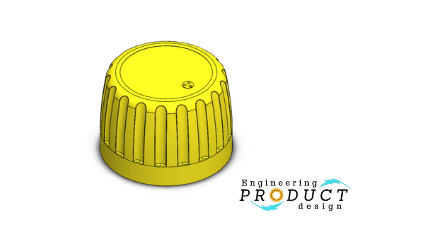
Master pattern creation step
The 3D model is then used to produce the master pattern. Although traditionally, patterns are CNC machined or handcrafted from metal, wood and plastic, today, it is cheaper and faster to use additive manufacturing techniques. Generally, these pieces are completed by hand, including cleaning and achieving the desired surface finish.
Due to speed and cost, 3D printing processes such as SLA, SLS, FDM and poly jet are widely used in the modern-day to create the master pattern.
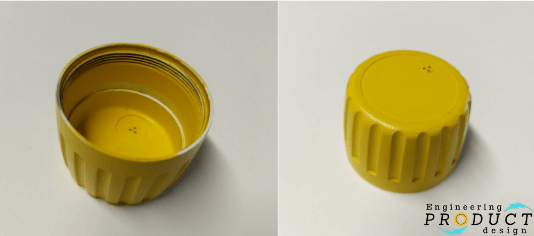
- Users can use CNC machining or 3d printing to create the master pattern.
- A cast model replica can also be used directly as the master pattern. However, it should be able to withstand temperatures of up to 40°C.
- Metal inserts are sometimes used to maintain tight tolerances in bores and crucial regions.
- By painting/spraying the master pattern, you may produce surface textures like gloss and matt.
- If injection moulding surface finishes such as SPI and VDI surface textures are required, then CNC machining the master pattern and finishing it is preferable.
How to create a silicone rubber mould
Then engineer manufactures a silicone mould using the master pattern using the following silicone moulding-making steps
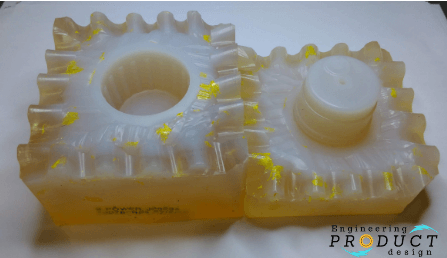
- The master pattern is suspended inside the casting box and equipped with cores, inserts, and casting gates. Risers are used to enable air to escape from the final mould.
- The silicone is poured around the master pattern into the casting box under a vacuum, where it flows around the master pattern, filling every detail.
- In an oven, the mixture is cured at roughly 40°C for 8-16 hours. The size of the silicone mould determines the length of time.
- Once the silicone rubber has been set and dried, the box and risers are removed.
- Finally, the mould is delicately cut using a knife, exposing the part’s negative hollow form. The wavy cut guarantees that the two mould parts are precisely aligned during manufacturing.
- Choosing and correctly applying a suitable mould-release agent is critical for avoiding stickiness and surface flaws.
Polyurethane pouring step
Before mixing, casting polyurethane resins are typically heated to around 40°C. Next, a two-component casting resin is mixed in precise proportions with any coloured pigment and put into the machine’s bowl. The mould is then replaced, and the pouring gates are linked to the mixing and pouring bowl.
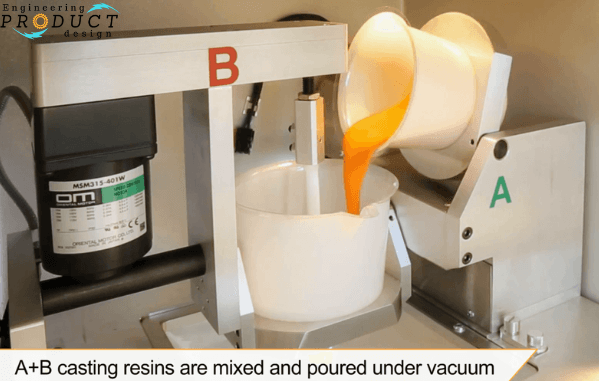
The casting resins and colour pigment are mixed and deaerated for 50-60 seconds under a vacuum throughout the auto-pouring process. The resin is then poured into the mould under a vacuum to avoid air pockets or cavities. The vacuum provides bubble-free moulds and removes any flow resistance created by air pockets inside the tool, and the tool is filled only by gravity feeding. The video below depicts the mixing and pouring process within Renishaw’s Urethane casting machine.
Demoulding step

The mould is then put in a heating chamber to cure once the resin has been cast. When the casting has hardened, it is taken from the mould. The gate and risers are removed from the casting, and any extra finishing is performed.
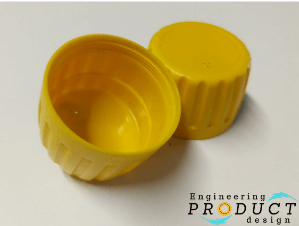
Urethane casting vs Injection moulding
Urethane casting and Injection moulding are similar processes that can create identical plastic parts using similar materials. However, in contrast to urethane casting, which relies on gravity to fill the moulds, injection moulding employs a pressured nozzle to push the molten plastic into the mould cavity.
The following are the primary factors to consider while picking between urethane casting and injection moulding.
Cost
Initial cost – Because injection moulding uses metal moulds, they are much more costly than urethane casts. Hence injection moulding is better suited for production-grade mass batch manufacturing. On the other hand, urethane casting moulds are cheaper, saving you money upfront. As a result, it is better suited for one-off designs, low-volume productions or pre-production prototypes.
Material cost – The production-grade plastic required for injection moulds is significantly more costly than Urethane. PVC, ABS, acetal, and LPDE are examples of such injection moulding materials. Therefore, Urethane is the preferable material for prototypes and low-volume production.
Per-part cost – The per-part cost for Urethane is usually greater than for injection moulding. This is because each mould can only produce a certain number of pieces. On the other hand, injection moulding produces far larger volumes, making it cheaper. This lowers prior higher expenses, like materials and tools. In this regard, injection moulding is typically the most cost-effective moulding method for long-term manufacturing.
Urethane is suitable for prototypes because of its lower upfront costs and shorter lead times – unless injection moulding is required. For larger product runs, injection moulding provides a considerably greater ROI, and the steel moulds used last significantly longer than their silicone counterparts.
Lead time
Moulds for injection moulding can take a long time to produce because they are made using metal, increasing product development duration. Urethane silicone moulds are easier to produce. They can usually be made with a 3D printer or even by hand, decreasing lead times and allowing you to get your product to market faster.
Volume
Urethane moulding can be utilised for prototypes, bridges, and low-volume manufacturing of one to hundreds of pieces.
Injection moulding can be used for prototypes or bridges, but it is most commonly employed for high-volume manufacturing of hundreds to tens of thousands of units.
Tolerance
Urethane’s tolerance is +/-.010″ for the first inch and +/-.005″ for each inch after that. Likewise, injection moulding tolerances are +/.005″ for the first inch and +/-.002″ for each inch after that.